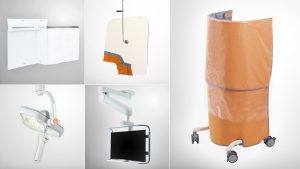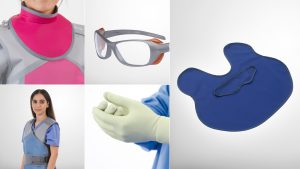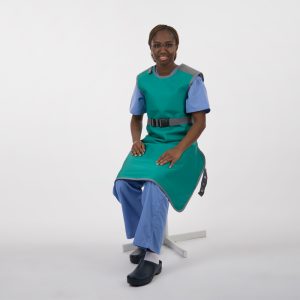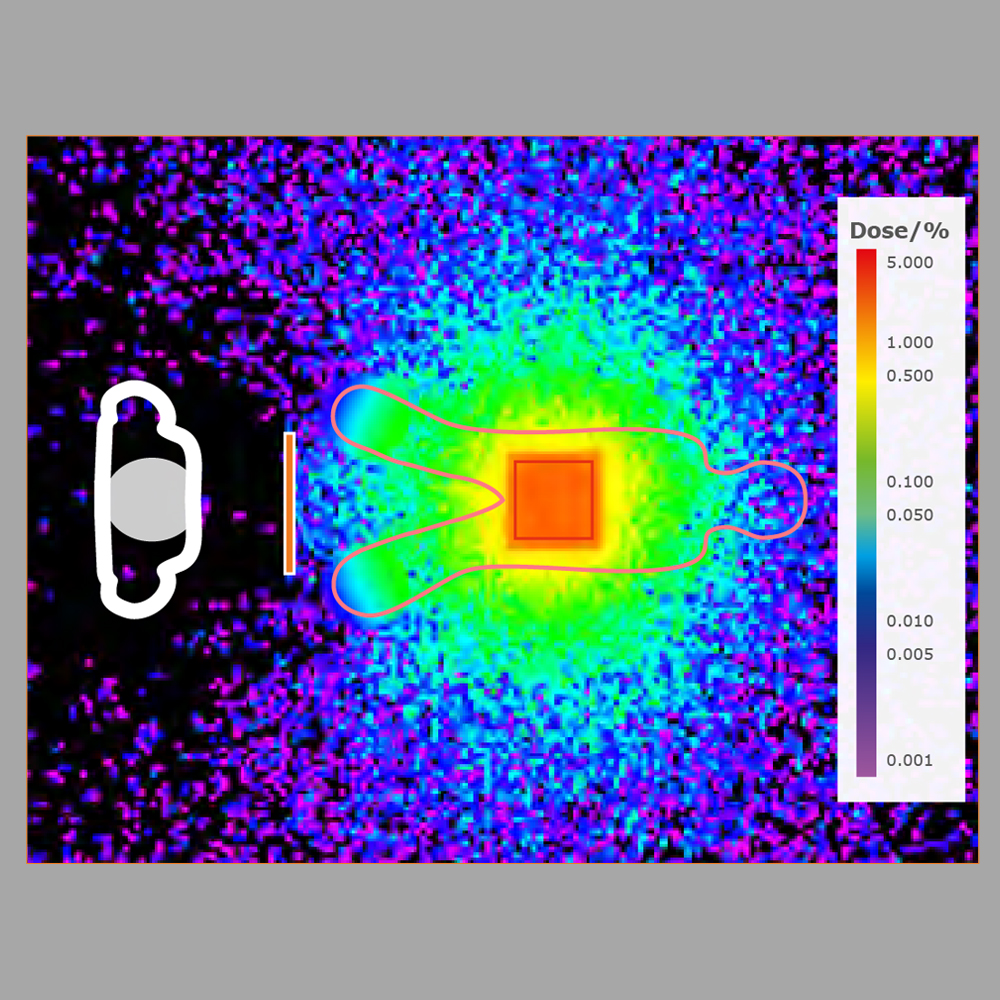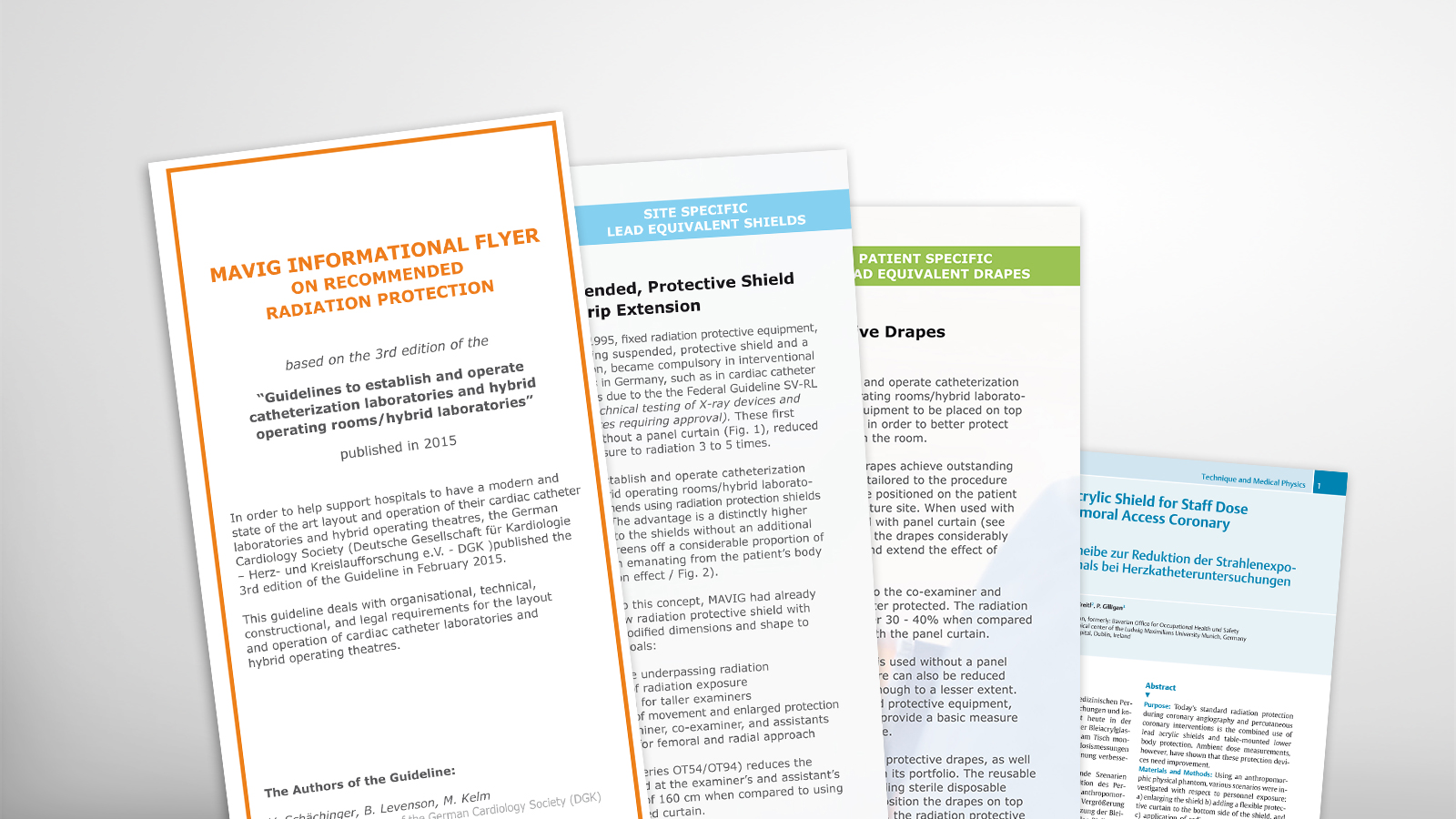MAVIG X-Ray Protection for Urology
Radiation protection is important and is already being used successfully in various medical sectors. Up to now, urologists had to resort to protection, developed for other areas of medicine.
Filling a niche in the market, MAVIG has developed a range of protective products, specifically designed for urology. This product range provides greatly improved and advanced protection for this field.
Recommendation of the ICRP
(International Commission on Radiological Protection)
- In 2011 the ICRP issued a recommendation to lower the annual allowed dose of radiation to the human eye (*1). Nevertheless, the special protection of the eye lenses has rarely been observed in urological interventions.
- This recommendation will come into effect in February 2018 (*2).
As of then, the currently allowed 150 mSv per year will be lowered to only 100 mSv in 5 years, in which each yearly dose must stay below 50 mSv.
This new limit will cause considerable re-thinking in urology. As an example Tayler E. et al (*3) conducted a study of patients in which they found an average dose of 208 μSv during ureteroscopy (URS) and stent placements.
If multiplied, this average dose would mean, that with the new limit taking effect,
an urologist could only perform 96 interventions per year (assuming a dose value of 20 mSv per year).
Specialised Radiation Protection – A Total Concept for Urology
„MAVIG is the world’s first and only manufacturer of radiation protection to introduce a complete range, designed to fully protect the urologist from hazardous X-rays.”
MAVIG RA641 X-Ray Protection Apron – Reliably Protected During Sitting Applications
State-of-the-art user protection for urology and other sitting applications. Using a functional one piece apron which complies with the respective standards ensures ideal X-ray protection in any working position.
Ergonomically Designed and Surprisingly Comfortable
Protective aprons are already standard equipment in urology. However, the aprons
currently used only offer protection while working standing up. But especially in urology a number of examinations are performed while being seated. When using a common front protection apron while working seated the gonads might be exposed to a higher dose of X-rays.
This is shown in a study by Horsburgh et al: “A Study of Occupational
Radiation Dosimetry During Fluoroscopically Guided Simulated Urological Surgery in the Lithotomy Position” (*4). The protection gap is caused by the apron resting on the knees.
With the innovative MAVIG urology radiation protection apron you are now securely protected in any application, thanks to our versatile, detailed solutions.
Gonad Protection for Sitting Positions – Best Possible Protection for Example During Urological Interventions
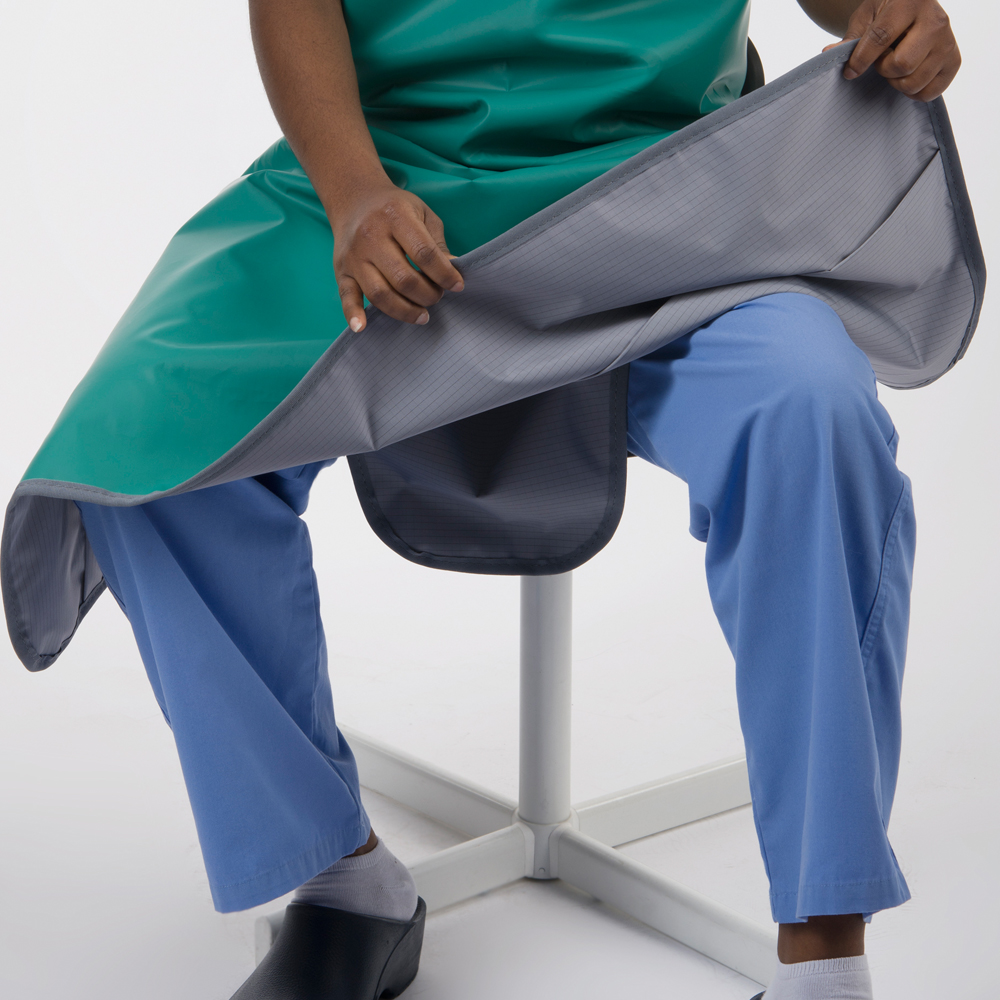
The apron was especially designed for seated positions. For this purpose we added a detachable gonad protection shield to the inside of the apron which protectively hangs over the gonads when sitting in front of the patient while the apron itself rests on the legs.
At the same time, we added larger side panels to the lower part of the apron which prevent the apron from slipping down from your legs when moving. Also when standing, the RA641 guarantees complete X-ray protection from the neck to the knees. The sides of the apron can be fastened in the back to avoid movement while working. The special gonad protection can be detached to save carrying extra weight.
MAVIG X-Ray Protective Shield OT81/OT91 – Innovative X-Ray Protection in Lithotomy Position
The newly developed shield can be optimally integrated into the urology workflow. Despite the extremely confined space available, the shield offers optimal scattered radiation protection for the examiner.
Radiation Protection for the User without Additional Physical Load
- Dramatic reduction in the exposure to scattered radiation, especially for the eye lens
- Effective radiation protection for the head of the operator
- Ideal addition to MAVIG X-ray protective clothing
The laterally guided protective shield can be easily installed on MAVIG’s patented Portegra2®
ceiling suspension system and support arms, which are known throughout the medical sector as the global standard.
Maximum safety and high functionality are fundamental principles in all radiation protection
shields manufactured by MAVIG. The high quality of the acrylic radiation protection shield allows for optimal transmission and thus the best possible view.
Monte-Carlo-Simulation in Lithotomy Position
Effective radiation protection has to take into account the distinctive features of procedures
carried out in the lithotomy position, for example in the field of urology. The Monte-Carlo-Simulation in the left picture shows the radiation exposure of the user without protection. The source of the radiation is in most cases above the table. This also adds to the high exposure rate of the doctor, especially for their head which is usually unprotected. The picture on the right shows the radiation exposure of the user behind a protective shield.
Therefore, explicit protection of the head is highly recommended in urology (*5) (*6).
Especially when working with the patient in lithotomy position, conventional, wide radiation protection shields can rarely be used due to the limited space and the special patient positioning. This led MAVIG to develop a new radiation protection shield specially optimized for this profile of requirements.
In a patient study by Knoll et al (*7 ) with measurements of the dose to the head during Ureteroscopy examinations (URS), a statistically significant reduction of the dose to the head of 59 % was achieved by using the MAVIG radiation protective shield OT81/OT91.
More Articles
(*1) ICRP ref 4825-3093-1464 Statement on Tissue Reactions, 2011
(*2) 2013/59/Euratom
(*3) Tayler E. et al: Ocular Radiation Exposure in Modern Urological Practice. J Urol. 2013 Jul;190(1):139-43. doi: 10.1016/j.juro.2013.01.081
(*4) Horsburgh BA., Higgins M.: A Study of Occupational Radiation Dosimetry During Fluoroscopically
Guided Simulated Urological Surgery in the Lithotomy Position. J Endourol. 2016 Dec;30(12):1312-1320. doi: 10.1089/end.
(*5) Hristova-Popova J. et al: Risk of radiation exposure to medical staff involved in interventional endourology.
Radiat Prot Dosimetry. 2015 Jul;165(1-4):268-71. doi: 10.1093/rpd/ncv089
(*6) Horsburgh BA., Higgins M.: A Study of Occupational Radiation Dosimetry During Fluoroscopically Guided Simulated Urological Surgery in the Lithotomy Position.
J Endourol. 2016 Dec;30(12):1312-1320. doi: 10.1089/end.2016.0596
(*7) Knoll T.: Radiation exposure of the surgeon: Benefit and practicability of a lead-acryl protection shield during ureteroscopy.
The Journal of Urology. 2016 April; 195(4) Supplement: e209–e210. doi:
http://dx.doi.org/10.1016/j.juro.2016.02.2763“ 10.1016/j.juro.2016.02.2763
